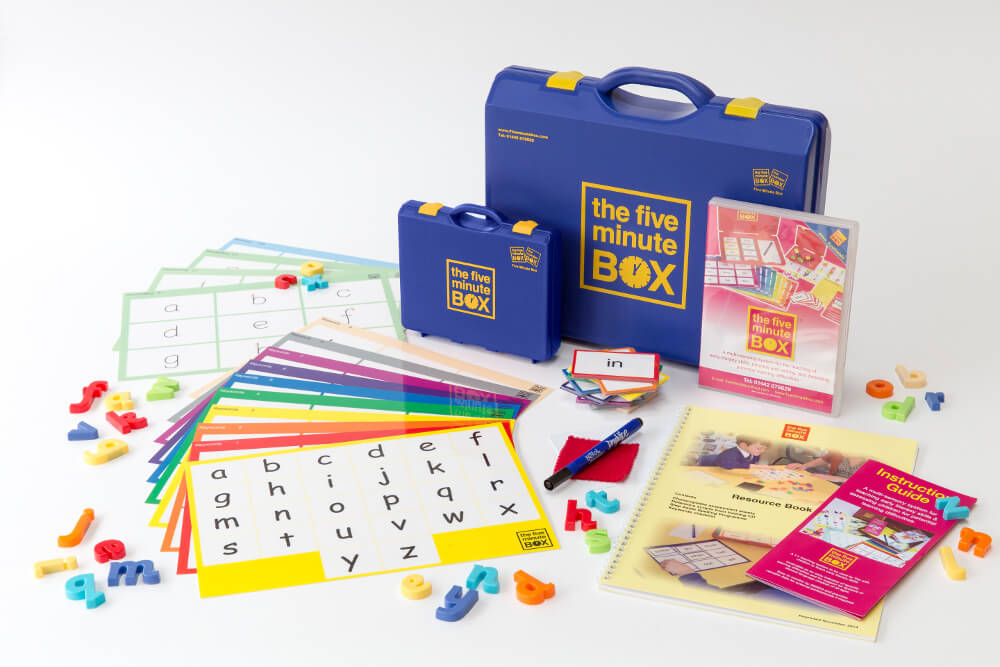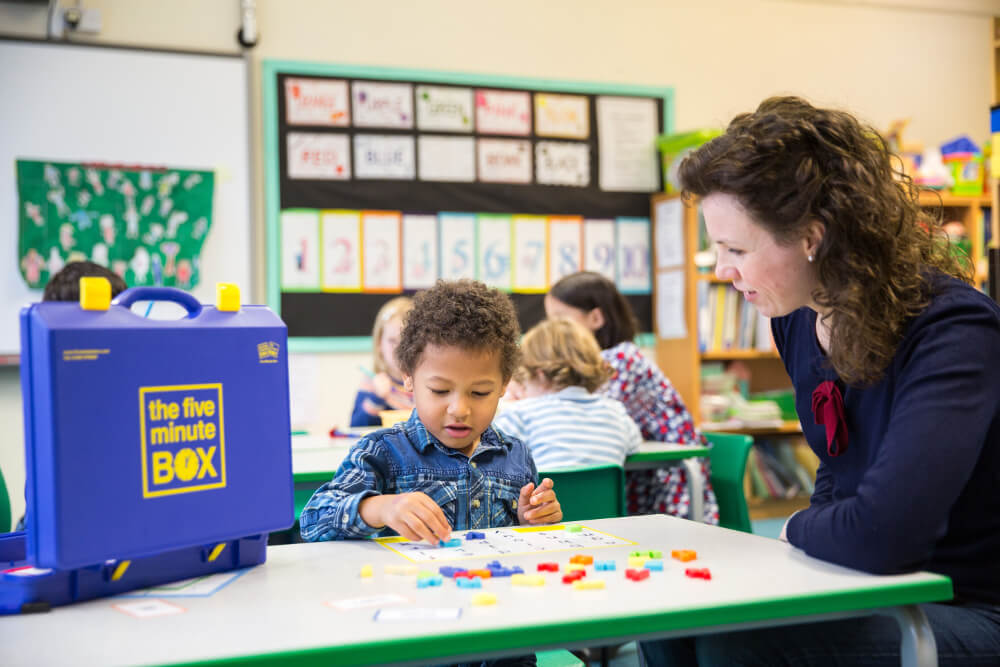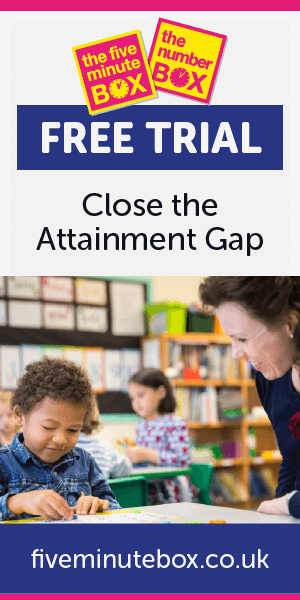30-second briefing
Five Minute Literacy Box is a multi-sensory intervention providing early support or catch up for English, while highlighting potential signs of dyslexia and specific learning needs. For over 15 years Five Minute Boxes have been raising attainment in schools. Related resources include The Number Box (for mathematics) and The Five Minute Literacy Box 2.
1 | Strengthens foundations of literacy
The Five Minute Literacy Box is a multi-sensory phonics programme which not only provides resources to develop key skills for reading, spelling and writing but also to enable the early identification of potential specific learning needs.

The high-quality resources are particularly useful for teaching early phonics skills and the activities are designed to stretch children to encourage them to learn more sounds, blends and key words through regular sessions.
Suitable from school entry onwards, Five Minute Literacy Box equally serves as a catch up intervention for children with EAL or extended school absence.
2 | Personalised intervention
Self-help strategies are built into every session so children develop the tools for confident, independent learning which they can take into any situation.
The child controls the pace of the session so has a sense of taking charge of their own learning and has a chance to overlearn elements they find more challenging. This way, skills are cemented and gaps in learning are avoided.
Crucially, children build self-esteem by growing their skills and feeling empowered by their progress.
3 | Real progress and catch-up

Literacy Box makes measurable progress with its grapheme/phoneme correspondence and its spelling. For example, monitoring the lowest performing 20 per cent of learners in one school, 100 per cent made progress in reading, while 95 per cent improved spelling accuracy by a year or more.
All learners improved self-esteem and confidence in learning (Neilston & Madras Campus Pupil Equity Fund Report, 2018-19).
4 | Manageable support
Five Minute Literacy Box can be used inclusively at reception and KS1 and sits well alongside other reading or spelling programmes that may be used in school.
Targeting support in five-minute sessions means reluctant learners are not overwhelmed and find the sessions manageable.
The resources are created to maximise teaching time with minimal preparation required.
The box contains everything that is needed for each session including sound boards, keyword boards, plastic letters and keyword cards, even a dry marker and eraser. Progress trackers and assessment sheets help you to measure progress.
With teaching professionals in mind, the resources are portable, reusable and easy to manage in a school environment.
5 | Training available
Our new 2020 version of the Five Minute Literacy Box introductory video helps teaching professionals get started with using the intervention. Each Box also contains a Resource Book to give background detail and teaching scripts to facilitate confident use of the intervention.
Specific training is available to schools who require more in-depth CPD. In partnership with Understanding & Supporting Learning, Five Minute Box offers new virtual training, as well as face-to-face training, as required.
Further details are on our website at fiveminutebox.co.uk.
Key points
- High-quality resources particularly useful for catch up in phonics skills, and activities to encourage children to learn more sounds, blends and key words through regular sessions.
- Individualised sessions that motivate even reluctant learners. Children love managing the resources themselves and working at their own pace of learning.
- Self-esteem develops through strategies that are built into the activities and transfer across the curriculum, thereby avoiding learned helplessness.
- Progress is accelerated particularly amongst children with EAL, those with gaps in education, communication needs and the 20 per cent lowest performing learners.










